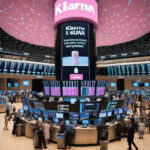US Nuclear Graveyard Scanned with Advanced LiDAR Tech for Safety, Risk Mapping
A team of workers from the US Department of Energy (DOE) used new imaging technology to scan the vast nuclear graveyard located in the United States. This groundbreaking approach involves the implementation of Light Detection and Ranging (LiDAR) technology to enhance safety measures and create detailed risk maps of the area.
The US nuclear graveyard, which houses decommissioned nuclear facilities and radioactive waste storage sites, poses significant safety challenges due to the potential risks associated with radioactive materials. By utilizing LiDAR technology, the DOE aims to improve its understanding of the site’s topography, infrastructure, and potential hazards, ultimately enhancing the overall safety and security measures in place.
LiDAR technology works by emitting laser pulses from a sensor mounted on an aircraft or ground vehicle. These pulses bounce off the Earth’s surface and are then measured to create highly detailed 3D maps of the area. This advanced imaging technology enables the DOE workers to accurately assess the nuclear graveyard’s layout, identify any structural weaknesses or potential risks, and develop comprehensive risk maps for effective management and mitigation strategies.
One of the key advantages of using LiDAR technology in this context is its ability to penetrate dense vegetation and capture detailed imagery of hard-to-reach areas. This capability is particularly crucial when dealing with nuclear facilities that may have complex structures or are located in remote areas. By obtaining precise data through LiDAR scanning, the DOE can better understand the site’s vulnerabilities and proactively address any safety concerns before they escalate.
Furthermore, the implementation of LiDAR technology can significantly reduce the time and resources required for manual inspections and surveys. Traditional methods of assessing nuclear facilities often involve on-site visits, which can be time-consuming, expensive, and potentially hazardous for workers. By leveraging LiDAR technology, the DOE can conduct thorough assessments of the nuclear graveyard from a safe distance, minimizing risks to personnel while maximizing efficiency.
In addition to enhancing safety measures, the use of LiDAR technology for mapping the US nuclear graveyard also enables the DOE to comply with regulatory requirements and industry standards. By generating accurate 3D models of the site and identifying potential risks in advance, the DOE can ensure that the necessary safety protocols and emergency response plans are in place, reducing the likelihood of accidents or environmental contamination.
As technology continues to advance, industries such as nuclear energy are increasingly turning to innovative solutions like LiDAR to improve safety, efficiency, and sustainability. The successful application of LiDAR technology in scanning the US nuclear graveyard serves as a testament to the potential of cutting-edge imaging technologies in enhancing risk management practices and ensuring the safe operation of critical infrastructure.
In conclusion, the recent use of LiDAR technology by the US Department of Energy to scan the nuclear graveyard represents a significant milestone in the field of nuclear safety and risk mapping. By harnessing the power of advanced imaging technology, the DOE is taking proactive steps to safeguard the environment, protect personnel, and uphold the highest standards of safety and security in the management of nuclear facilities.
nuclear graveyard, LiDAR technology, risk mapping, US Department of Energy, safety measures












